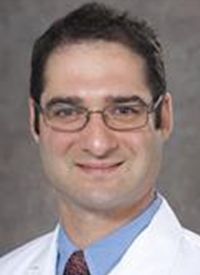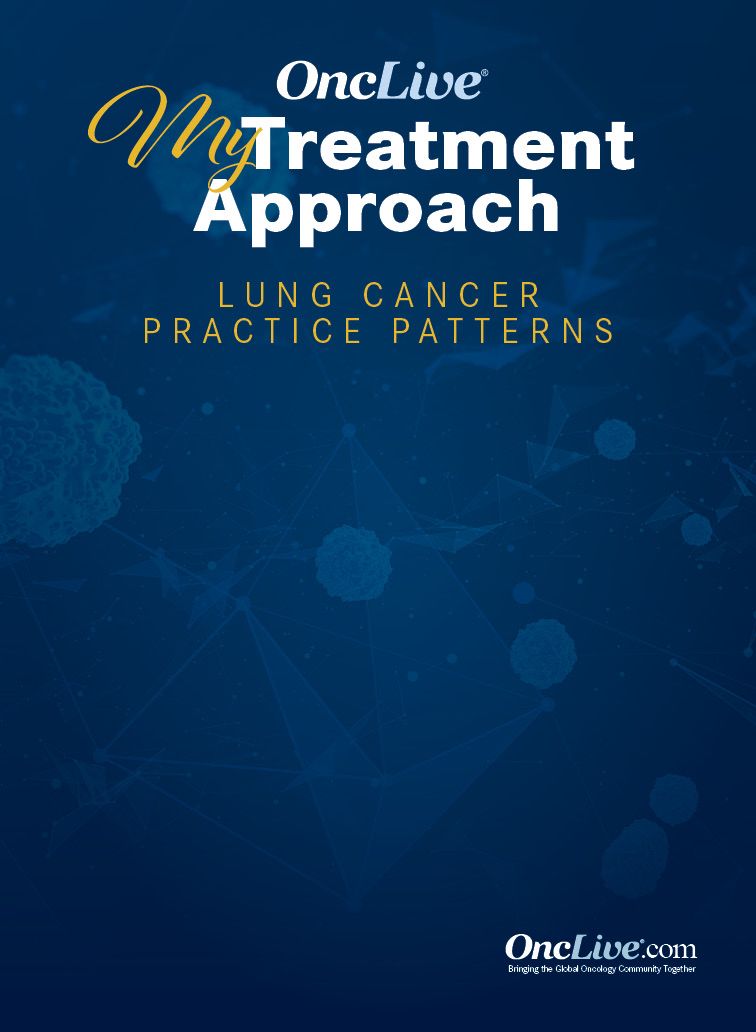Publication
Article
Supplements and Featured Publications
Reiss Shares Secrets Behind Optimal Molecular Testing Approaches in NSCLC
Author(s):
Pivotal trials, such as the phase 3 FLAURA trial with osimertinib in patients with EGFR-mutant non–small cell lung cancer NSCLC, have demonstrated the significant benefit yielded with targeted therapies.
Jonathan Riess, MD, MS

Pivotal trials, such as the phase 3 FLAURA trial (NCT02296125) with osimertinib (Tagrisso) in patients with EGFR-mutant non–small cell lung cancer NSCLC, have demonstrated the significant benefit yielded with targeted therapies. Plus, with the substantial influx of targeted agents to the NSCLC treatment arsenal for those with oncogenic-driven disease, an approach to molecular testing that ensures the highest sensitivity is crucial, according to Jonathan Wesley Riess, MD, MS.
“It is basic, in addition to [testing] tissue and plasma [samples], to order broad genomic profiling,” Riess said. “For example, polymerase chain reaction testing may miss a bunch of heterogeneous EGFR exon 20 insertions that a next-generation sequencing platform would detect, and broad genomic profiling may detect a broad set of molecular aberrations that match to FDA-approved treatments or clinical trials.”
In an interview with OncLive®, Riess, an associate professor of medicine in the Division of Hematology and Oncology at University of California Davis Comprehensive Cancer Center, discusses his approach to molecular testing in patients with NSCLC, and what effective testing should look like in clinical practice.
OncLive®: Osimertinib was tested in the frontline setting for patients with EGFR-mutant NSCLC in the phase 3 FLAURA trial. What has been the clinical impact of these findings?
Riess: FLAURA was a phase 3 clinical trial that randomized patients to receive either the next-generation EGFR TKI osimertinib or [investigator’s choice] of the first-generation EGFR TKIs erlotinib [Tarceva] or gefitinib [Iressa]. What it showed was an impressive improvement in progression-free survival [PFS]. The median PFS was approximately 18.9 months vs 10 months, and [there was a] 6-month improvement in overall survival [OS] for a median of 38.6 months [with osimertinib]. This was an impressive advance in the treatment of [patients with] EGFR-mutant NSCLC. Osimertinib had previously been approved in patients who had T790M mutations after progression on earlier generation EGFR TKIs, and this showed that moving it up front not only improved PFS, but OS. It is the de facto standard of care, in my mind, for patients with stage IV metastatic NSCLC [whose tumors harbor] EGFR exon 19 deletions or L858R mutations, which are the 2 most common EGFR mutations.
EGFR mutations are being detected either through circulating tumor DNA (ctDNA) or standard tissue biopsy. What are some ways in which molecular testing can be streamlined for this patient population?
[We now] have 9 potential targets that we can match to FDA-approved drugs to. We have [the more common] EGFR mutations like exon 19 deletions and L858R mutations, and we have the less common, but still not infrequent, EGFR exon 20 insertion mutations where amivantamab [-vmjw; Rybrevant] and mobocertinib [Exkivity] have been approved. We have KRAS G12C mutations that can be targeted with sotorasib [Lumakras], [as well as] dabrafenib [Tafinlar] and trametinib [Mekinist] with BRAF V600E mutations. [We have] RET fusions targeted with selpercatinib [Retevmo] and pralsetinib[Gavreto], and [there are agents targeting] NTRK fusions, and MET exon 14 skipping mutations. [Additionally,] we are learning more and more about new targets.
[There are] 2 main ways to look [molecular testing]—through plasma ctDNA and tissue. I often send for both. Plasma comes back faster, but we may get a false negative where there is not enough ctDNA being shed in the blood, and tissue can therefore be informative. [Another issue is when patients] develop resistance to targeted treatments, such as patients with EGFR mutations. When patients progress on osimertinib, I use the same approach of [utilizing] plasma and oftentimes tissue. There are [mechanisms of resistance], such as small cell transformation, that are not just changes in bypass tracks, such as MET amplification, but also histologic transformation where we need [to test] to determine that.
What does effective molecular testing look like to you?
Effective testing should be sensitive, specific, and fast. We want a quick turnaround time, and that is where plasma can potentially [be beneficial]; however, we want to know that [a positive result] is a true positive, [and a negative result] is a true negative. As mentioned with plasma, sometimes there is not enough ctDNA being shed in the blood for detection, and we need to look at tissue to make sure we are being as sensitive as possible.
The other important thing is that we are evolving towards more RNA-based methodologies that are better at detecting some of the fusions, and so forth, and that is also improving detection rates. These are all things we consider when we are ordering testing.
What are some best practices for when physicians send for tissue biopsy and are waiting for test results?
As mentioned, plasma can accelerate turnaround time, and in that case, we can just send off a tube of blood from clinic and the patients are not waiting [as they would if we] had to cut the slides, mail them out, determine tissue purity, and so forth. That could add delays to the testing. [We also must] follow up with pathology colleagues to make sure that the tissue was sent out in an expedited fashion and coordinate with our testing provider to get an estimated time of arrival.
The other thing that accelerates things, for example, is if I send off plasma because I think there may be insufficient tissue, I am [also] lining up a tissue biopsy. If the plasma comes back negative, then I am not at the point 1 or 2 weeks later [where I have to] set up the biopsy. I am doing it ahead of time, so I can get the plasma back and if it is positive, that that is great, and I can cancel the procedure. If it is negative, I have that biopsy lined up the next day. That is another critical approach in terms of accelerating timelines that I apply in my clinic.
Could you speak to the importance of multidisciplinary approach to NSCLC treatment?
A multidisciplinary, multimodality approach to treatment of lung cancer, or any cancer for that matter, is absolutely essential. At UC Davis, we have a great multidisciplinary tumor board with our radiologists, radiation oncologists, thoracic surgeons, interventional pulmonologist, and so forth, that focus on lung cancer. We discuss complex cases, particularly locally advanced cases, or unusual cases, and often those discussions center around where we can biopsy, or what we should do about a mechanism of resistance. [This approach] really brings precision oncology to multimodality treatment.

Latest Conference Coverage

Perioperative Pembrolizumab Regimen Upholds Survival Benefit in Resectable NSCLC

Zongertinib Elicits Durable Responses in Pretreated Advanced HER2-Mutant NSCLC

Lenvatinib Shows Efficacy in Advanced HCC Post-Progression on Atezolizumab/Bevacizumab

Sacituzumab Govitecan Does Not Significantly Improve OS in Pretreated Urothelial Carcinoma
2 Commerce Drive
Cranbury, NJ 08512



